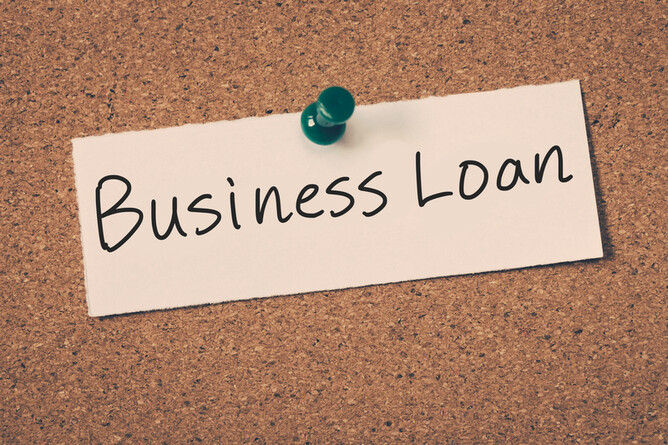How to get your CBIL?
The Coronavirus Business Interruption Loan Scheme (CBILS) has been open for nearly 2 weeks, has already come under fire by all involved and has had much of the detail already repurposed into version 2 designed to make it easier to apply. Here's the information you need to understand if your business is eligible and how you can apply.
Which businesses can apply?
There are certain conditions that businesses must meet in order to be eligible for the loan:- Must be a UK based small or medium (SME) business with an annual turnover of up to £45 million and over 50% of the turnover must be generated from trading activities - that's the amount your company generates in income for selling goods and/or services.
- The application must be for business purposes only.
- The business must have been adversely impacted by the Coronvirus (COVID-19) outbreak.
- Your loan facility must be used to support ongoing and future trading based primarily in the UK.
- Must have a proposal which the lender considers viable, were it not for the pandemic.
- Businesses from all sectors can apply apart from:
- Banks, insurers and reinsurers (except insurance brokers);
- Public sector bodies;
- Further education establishments, if they are grant funded;
- State funded primary and secondary schools.
What can you apply for?
A loan facility of up to £5 million. The loan facility will either be offered as a traditional loan, an overdraft facility, invoice financing or asset financing depending upon the needs of the business at the time of application, payment terms for traditional loans and asset finance are for up to 6 years, for overdrafts and invoice finance for up to 3 years. Lender levied fees, such as set up and arrangement fees will be paid for by the government, along with the initial 12 months interest.
Who can you apply to?
Most businesses should seek assistance from their current bank. However, if this isn't appropriate, there are 40 accredited lenders who may be able to help, a list of which can be found here: Accredited lenders and partners. Not all lenders can provide the same financing options nor the amount offered, it is suggested that you take a look at the lender's website to understand what they are able to provide before starting an application. It is up to the lender if they wish to offer you finance.
What you will need in order to apply?
Apart from the details of the finance required, i.e. amount of borrowing, what the money will be for and how long you wish to borrow the money over, you will also need the following:
- Management accounts for the current year as well as historical accounts;
- A cashflow forecast;
- A business plan;
- Details of business assets, like stocks, shares, other assets owned by the business;
- Personal guarantees in most cases, where the facility required is over £250,000. This will not include the Principal Private Residence (PPR).
What should you do if you're unsuccessful?
Try again, it's still appears to be the case that high street banks are being reserved with lending facilities. Other less traditional funders may be more than happy to lend to you.
What will happen if you can't pay the loan back?
If you're in a position where you're unlikely to be able to make anymore payments then much of the rest will be paid back. The government have guaranteed up to 80% of the loan (subject to an agreed pre-lender claim cap), in order to give lenders confidence in being able to provide the loans in the first place as their loss will be minimal, and the business is likely to remain liable for any balance outstanding including any interest. For those borrowers who have personal guarantees lodged against the loan, then only 20% of it can be called on to set off against the default once any business assets have already been offset.
Problems with the scheme
There have already been reports of problems accessing the money that was promised to SMEs, and some changes have already been made to combat those. However, there are still issues surrounding certain terms that have not yet been addressed.- Banks are directing borrowers to their normal products rather than via the CBILS scheme or emergency funding - we have heard that there are too many small businesses either being declined lending or shifted over to normal loans rather than through the government loan scheme.
- Interest rates on CBILS are too high - we had heard yesterday, from two separate sources, that these were going to be capped but as of yet have not seen any evidence to suggest this is actually going to happen.
- Business owners are being declined on their business plan - it appears that despite the loans being set up to enable viable proposals to support trading, a business plan proposing a switch to online trading was deemed unacceptable by a high street lender; the owner switched tacks to one of his struggling to pay the bills and was accepted by the same lender.
- SMEs backed by equity or venture capital partners are being declined - high street lenders appear to be taking the EU SME definition in it's fullest scope when deciding a businesses eligibility.
- The time it takes to receive the money to arrive could bankrupt many businesses relying on this support - initially it was estimated that money would be with businesses within 2-3 weeks, it's now looking likely that those accepted may have to wait at least 5 weeks.
- Only available to businesses with a turnover of less than £45 million - the government are working to extend then scheme for businesses with larger turnovers.
If you've applied for a loan, good luck. If you haven't and need help in gathering up your financial information, then please get in contact and we'll advise you on how we can help.
Photo credit: Photo 94911461 © Sean824 - Dreamstime.com

